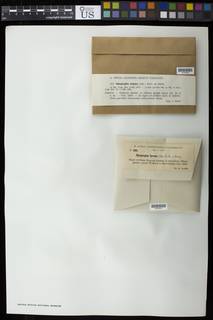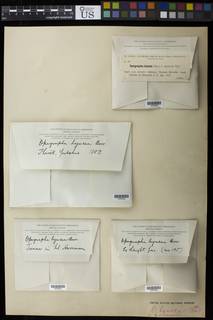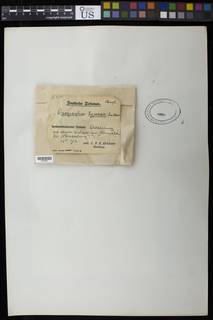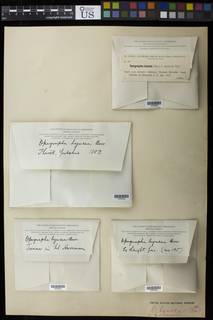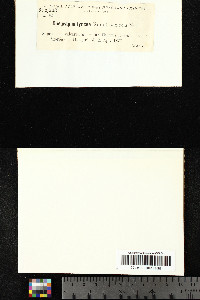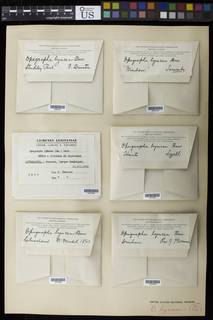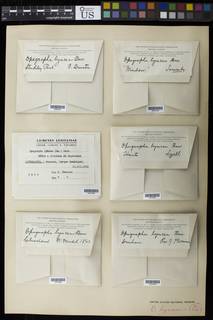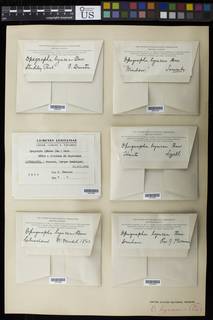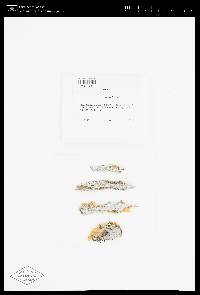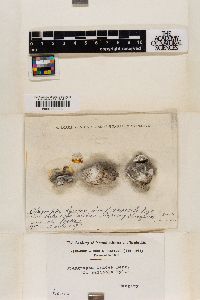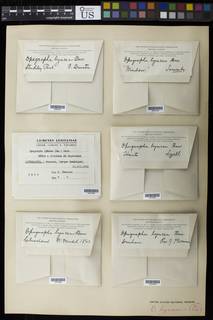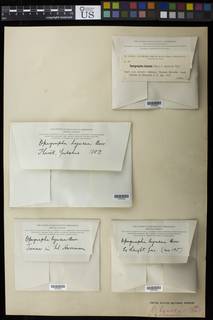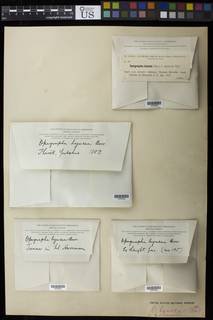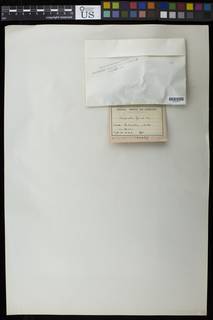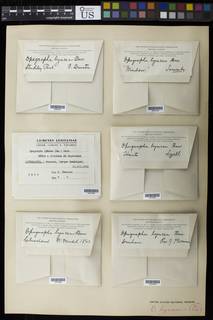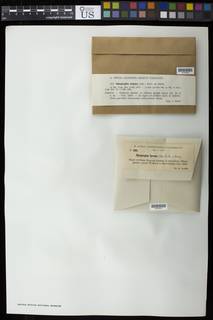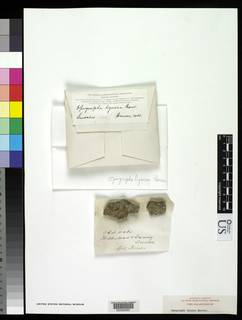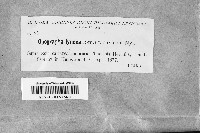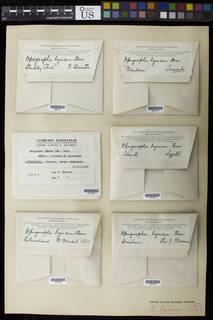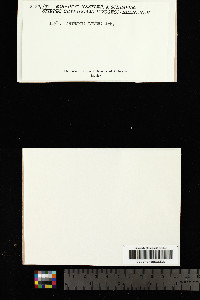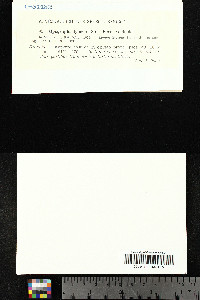
Consortium of Lichen Herbaria
- building a Global Consortium of Bryophytes and Lichens as keystones of cryptobiotic communities -
- Home
- Search
- Images
- Species Checklists
- US States: O-Z >
- US National Parks
- Central America
- South America
- US National Parks
- Southern Subpolar Region
|
|
|
|
Family: Lecanographaceae
[Arthonia lyncea (Sm.) Ach., moreLecidea lyncea (Sm.) Ach., Lichen lynceus Sm., Opegrapha lyncea (Sm.) Borrer ex Hook., Opegrapha lyncea f. lyncea (Sm.) Borrer ex Hook., Opegrapha lyncea f. nigra (DC.) M. Choisy, Spiloma lyncea (Sm.) Ach.] |
Nash, T.H., Ryan, B.D., Gries, C., Bungartz, F., (eds.) 2004. Lichen Flora of the Greater Sonoran Desert Region. Vol 2. Thallus: crustose, effuse, continuous or +rimose, usually thin and continuous but sometimes well developed and almost cracked-areolate, ecorticate and without a differentiated medulla surface: white, smooth or somewhat granulose, tartareous, somewhat pulverulent (but not sorediate) Ascomata: numerous, scattered or +crowded, immersed or subimmersed in the thallus, seldom adnate, very variable in form, apothecioid and +round, 0.3-0.5 mm in diam., or somewhat lirelliform, broadly or narrowly oblong, 0.3 disc: black, broad and expanded, plane or somewhat convex; often blue-gray pruinose exciple: shallow and usually undulating, scarcely raised, not very prominent, becoming slightly flexuous, +excluded at maturity, carbonaceous black, closed or, when young sometimes open at the bottom, K+ dark green 0.8 x 0.3-0.5 mm, simple or slightly branched, straight or curved and wavy pseudothecium: pale brown, 15-25 µm thick hymenium: hyaline, 65-87 µm tall, I+ pale red or +blue; paraphysoids: up to 1.5 µm wide, richly branched and anastomosing, not or slightly widened at the apices, with granular external brown pigmentation subhymenium: brown, 20-35 µm thick, I+ pale blue asci: cylindrical-clavate, 60-80 x 12-14 µm, when young 38-50 x 10-12 µm, grumulosa-type, the entire endoascus amyloid, 8-spored ascospores: hyaline, becoming brown only when old, transversely (6-)7-9(-12)-septate, narrowly fusiform, vulgata-type, (17-)23-35 x 3-4 µm; wall: thin, not swollen at the septa, with gelatinous sheath layer (c. 1 µm thick) Pycnidia: not seen Spot tests: thallus K-, C-, KC-, P- Secondary metabolites: two unknown substances, orange and greenish gray after sulfuric acid and heat. Substrate and ecology: on dry, rough and brittle, slightly acidic bark, and or wood, in forested areas and on isolated trees, especially in oceanic areas or other places with humid, shady microclimates World distribution: Mediterranean and western Europe and western North America Sonoran distribution: southern California, Baja California, Baja California Sur, and Sonora. Note: Typically the Sonoran population has spores on the shorter end of the range given above. |
Powered by Symbiota



